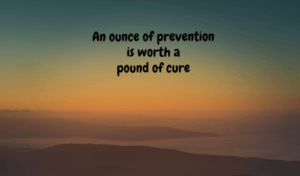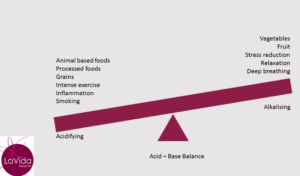As a naturopath, I want to help you feel better, not just by masking or suppressing symptoms but by getting to the basic triggers or causes of your ill-health. That’s why most of my naturopathic clients find their way to me. They want to understand what might be driving their illness and they want to learn what they can do for themselves to remove or reduce those drivers.
In addition to looking at their diet and lifestyle it is worth delving deeper to look at exposure to chemicals or other possibly harmful toxins. The research into the potentially harmful effects of environmental toxins is growing at a rapid rate. Exposure to harmful chemicals and electromagnetic fields can make some people really unwell. They can cause a wide variety of symptoms and contribute to chronic illness (particularly in highly susceptible people).
I want to outline for you, the most common chemicals or toxins you are likely to come across, why they are a problem and who’s most at risk. The point of this blog is not to alarm you or make your head explode with technical terms but to raise your awareness just a little and to get you thinking about the easy things you can do to reduce your exposure. And, if you are unwell, to perhaps consider whether there is something in your environment that is contributing to your ill-health.
What are the main chemicals or toxins you need to be aware of?
Chemical manufacture has really taken off since World War II. Since that time, a phenomenal 85,000 new chemicals have been registered (and the list continues to grow). They are ubiquitous and found in the foods we eat, the furnishings in our houses, every gadget and appliance we use, our clothing, our gardens, our cars and more. Without reeling off lots of complicated names and acronyms, here are some of the major categories:
- persistent organic pollutants (POPs) – used in agriculture, pest control and manufacturing, by their definition, they persist in the environment (long after their use has been banned eg DDT) and potentially accumulate up the food-chain especially in fatty foods (and humans are at the top of that food chain…in fact babies right are at the top). Most of these chemicals did not exist prior to the 1950s.
- electromagnetic fields (EMFs) – such as from Wi-Fi, mobile/cordless phones (and towers), smart meters, electrical devices, wireless appliances etc.
- chemicals in food, personal care products, pharmaceuticals, petrochemicals, plastics, cleaning products, gardening/agricultural chemicals, pesticides, paints and dyes, furniture, solvents etc.
- mould (especially living in damp environments or houses)
- other toxins include heavy metals such as lead, mercury, arsenic, cadmium (found naturally in the environment but used in a wide range of industries).
Why are chemicals or other toxins a problem for your health?
To quote Paracelsus: “All substances are poisons; there is none which is not a poison. The right dose differentiates a poison from a remedy. ”
So it really comes down to “how much is too much?”.
What is an acceptable level of exposure that will not affect your health?
This is where it gets complicated because those much more knowledgeable than me cannot agree. It may surprise you to know, the majority of chemicals have not been tested on humans and certainly not in combination or over the long term (which is the way most of us are generally exposed, right?). Where testing has been done, the focus has often been more on how much of one chemical is lethal (in rodents) rather than what level would make you unwell if you were regularly exposed. Often the assumption is that the chemical is safe until we discover otherwise.
As an example, as recently as 1970, in the USA levels less than 40 micrograms of lead per decilitre of blood was not considered poisonous. That has since been reduced to 10 milligrams. In Australia the NHMRC considers a level of 5 milligrams or more to warrant investigation especially in children and pregnant women. In a NSW study published in the journal Environmental Research in 2016, 56% of homes tested were found to have detectable levels of lead in their water supply (and 8% of them exceeded the Australian Drinking Water Guidelines. This was attributed to tap fittings and included both old and new homes. Similar problems were found with copper.
With regard to chemicals, many are what is known as “endocrine disruptors”. That is, their molecular shape resembles that of our own hormones and as such, there is potential for our bodies to treat them as if they are our hormones resulting in problems with menstrual cycles and fertility (in men and women) or other endocrine organs such as our thyroid.
Even at low levels of exposure, some chemicals can be toxic to our nervous and immune systems. They can affect growth and development (including in pregnancy) and they put an additional burden on our own detoxifying systems (resulting in weight gain….if our bodies don’t have the capacity to get rid of them, we will store them in fat to protect vital organs from exposure).
Let me tell you, it doesn’t make for fun reading and there is really no consensus on what might be safe levels and I doubt we will ever know because ultimately it will vary from person to person. However, we need to remember there are simple things you can do to reduce your exposure and support your body’s ability to safely remove these toxins.
Who is at risk of exposure to environmental toxins and chemicals?
The extent to which you are at risk of ill-health due to exposure to chemicals and toxins is dependent on how much you are exposed to along with your ability to process, detoxify and remove waste from your body. So we are all at risk to some extent. Those most at risk include:
- children (from baby through to adulthood)
- pregnant women (and those planning pregnancy)
- those whose diet or lifestyle does not support good detoxification
- people working in industries where exposure is elevated
- the elderly
- the immune-compromised
What are the health issues associated with exposure to environmental toxins?
The extent to which you might be affected by exposure to chemicals or other toxins depends on:
- how much you’ve been exposed to and for how long (the greater your exposure, the more your liver and kidneys are burdened potentially leading to greater sensitivity)
- the potency of the toxins
- your susceptibility – a function of age, genetics, overall health, diet and lifestyle
Exposure to various toxins have been linked to:
- auto-immune disorders
- type II Diabetes
- allergies and asthma
- heart and cardiovascular disease
- liver problems
- thyroid disorders
- obesity
- infertility
- some cancers
- neuro-degenerative disorders such as Parkinson’s disease or Alzheimer’s
Some of the more common signs and symptoms of toxicity include:
- headaches
- fatigue
- skin rashes
- brain fog, confusion, poor memory
- mood disorders such as depression or anxiety
- weight gain
- allergic reactions
- chemical and food sensitivities
- tinnitus
Almost all signs and symptoms of disease could be linked to toxin exposure so it is very important that we don’t just focus on toxins but look at other possible causes too. So, in conjunction with ruling out infections, poor nutrition, stress and other likely causes of ill-health your naturopath should look at heavy metal, chemical or EMF exposure. It can be frustrating when your environment is making you sick but not those around you but you may be the proverbial “canary in the coal-mine” so we need to pay attention to your symptoms.
25 things you can do to reduce your exposure and improve your body’s ability to cope with exposure
It can be pretty daunting and depressing to dwell on the damage all these pollutants might be doing but it is good to know there are some simple things you can do to reduce the effects on your health. As a naturopath, it is becoming more and more apparent to me that these toxins may be at the heart of your disease.
Making some simple changes to your diet and lifestyle along with appropriate nutritional supplements can help you to detoxify and improve or maintain health. Rather than wait for something to be proven as safe or unsafe, adopt the “precautionary principle” and take action to reduce risks wherever possible or practical. Ultimately this is a choice only you can make. It is impossible to avoid these toxins entirely but we can become more aware of our exposure and make conscious choices to cut our exposure where possible for our long term benefit.
Start with some of the following:
- Choose organic fruit, vegetables and animal products as much as possible. (At the very least, familiarise yourself with the Environmental Working Group’s list of the “dirty dozen” (i.e. the most sprayed fruit and vegetables) and the “clean 15” (least spayed). As a general rule, the thicker the skin, the harder it is for a pest to penetrate and so not as much pesticide is required
- Wash and scrub fruit and vegetables before consuming and consume as much variety of fruit and veg to boost your anti-oxidant levels to support your liver and protect your organs
- Avoid large, carnivorous fish
- Get to know your local farmers’ market
- Use glass, ceramic, stainless steel for cooking or storing food
- Avoid storing or reheating food in plastic
- Avoid plastic water bottles (invest in stainless steel or glass drink bottles)
- Avoid using plastic wrap (especially if it is in direct contact with food)
- Eat wholefood and avoid processed food as much as possible to reduce consumption of chemicals such as food additives, artificial colourings, sweeteners etc
- If using canned food, choose cans labelled as “BPA-free”
- Invest in a good water filter and drink plenty of filtered water (or run your tap for a couple of minutes before drinking)
- Introduce indoor plants to help cleanse the indoor air
- Remove shoes when in the house
- Wash your hands regularly
- Open windows in your home for ventilation (studies haves shown there are more pollutants in the home than outdoors except on high smog days…download an air quality app to monitor outdoor air where you live)
- Don’t allow humidity to build up as it encourages mould (e.g. in bathrooms). Use a humidifier if necessary to keep humidity between 45-55% and ensure air-conditioning systems are well maintained
- Invest in a vacuum cleaner with a HEPA filter
- Consider removing carpets
- Buy Australian made (or at least know where your goods come from ….some countries have more stringent regulations around the use of chemicals than others)
- Choose perfume-free products, especially skincare and personal care items
- Avoid anti-bacterial products with chemical bug killers
- Use damp microfibre cloths for cleaning
- Text or email instead of using a mobile/cordless phone or keep calls to a minimum (for more on reducing exposure read these simple guidelines from Californian Dept of Public Health)
- Switch off your electrical gadgets (including modems) at night (and no electricals in the bedroom)
- Get out of the city and to the bush or seaside whenever you can and breathe that fresh air
Once you get started, I’m sure you will think of other things you can do as well. The list of possibilities is endless and can be overwhelming. I suggest you start with a few basics first and know that you are taking steps in the right direction to improve your long term health.
What else can you do?
Further resources
There are dozens of resources available…here are just a few to get you started.
Websites for information on environmental toxins:
Books for further reading on environmental toxins:
- Slow death by Rubber Duck by Rick Smith and Bruce Lourie
- Healthy home, Healthy family by Nicole Bilijma
- What’s in this stuff? By Pat Thomas
- Silent Spring by Rachel Carson
Testing
If you are concerned that your ill-health could have a chemical or toxin exposure at the base of it, we can help you, using comprehensive lifestyle and exposure questionnaires and a variety of pathology tests including urine, blood and hair testing. These can be invaluable for getting to the source of your symptoms. We can then use a variety of carefully selected nutritional and herbal supplements to aid removal of toxins and support health.
Start with a detox
Depending on your particular situation, you might be suitable for our 21 day detox program which could be a great way to get you started on a healthier, less toxic life.





